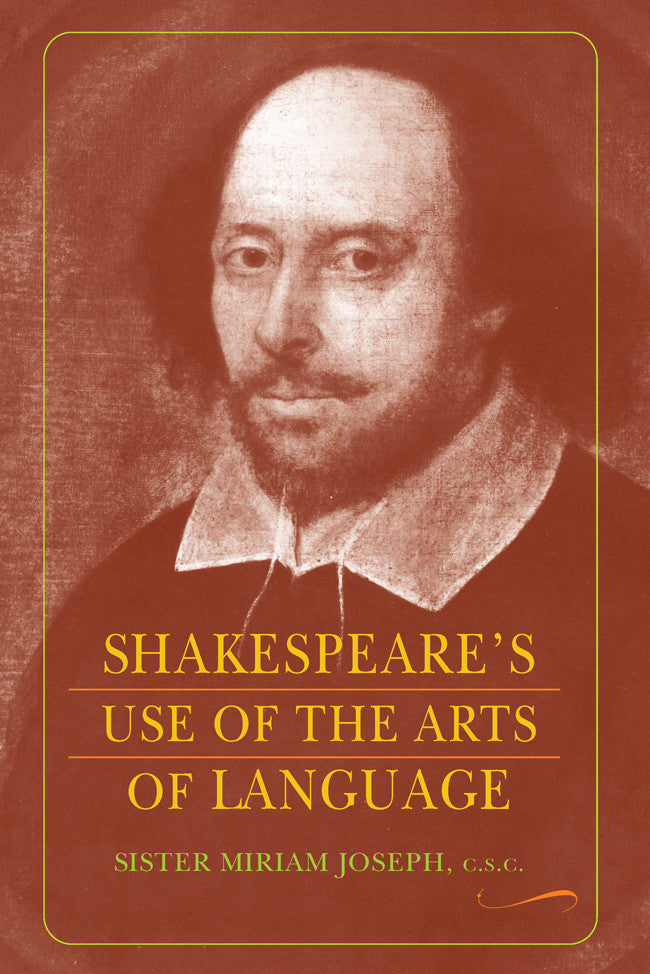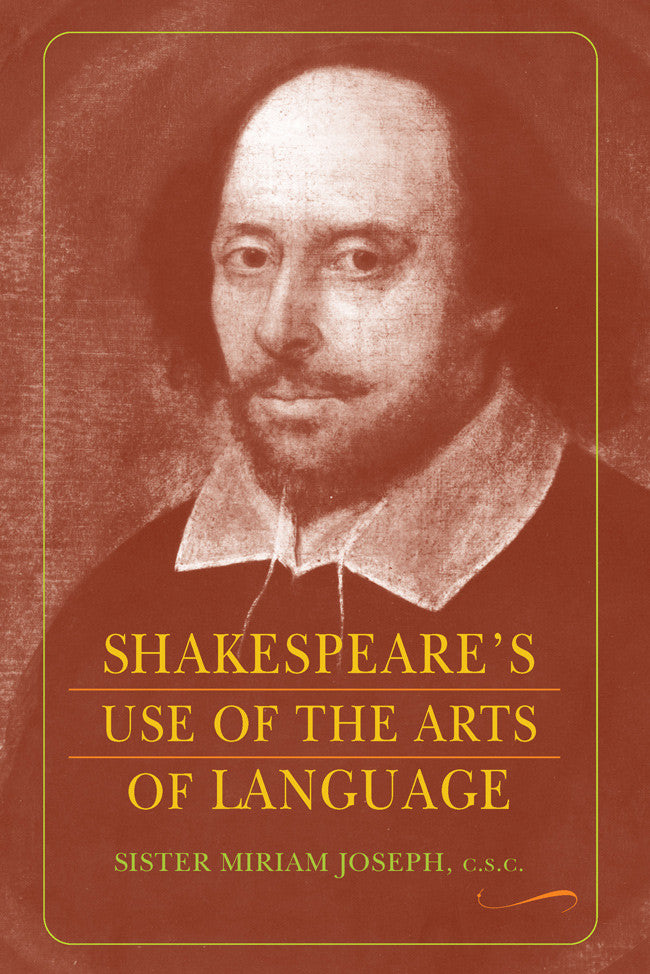Shakespeare's Use of the Arts of Language
Shakespeare's Use of the Arts of Language
Sister Miriam Joseph
Couldn't load pickup availability
423-page paperback / 6" x 9" / ISBN 978-1-58988-048-1 / Publication Date: September 2008
Grammar-school students in Shakespeare's time were taught to recognize the two hundred figures of speech that Renaissance scholars had derived from Latin and Greek sources (from amphibologia through onomatopoeia to zeugma). This knowledge was one element in their thorough grounding in the liberal arts of logic, grammar, and rhetoric, known as the trivium. In Shakespeare's Use of the Arts of Language Sister Miriam Joseph writes: "The extraordinary power, vitality, and richness of Shakespeare's language are due in part to his genius, in part to the fact that the unsettled linguistic forms of his age promoted to an unusual degree the spirit of creativeness, and in part to the theory of composition then prevailing…The purpose of this study is to present to the modern reader the general theory of composition current in Shakespeare's England." The author then lays out those figures of speech in simple, understandable patterns and explains each one with examples from Shakespeare. Her analysis of his plays and poems illustrates that the Bard knew more about rhetoric than perhaps anyone else. Originally published in 1947, this book is a classic.
Sister Miriam Joseph Rauh, C.S.C., (1898-1982) earned her doctorate from Columbia University. A member of the Sisters of the Holy Cross, Sister Miriam was professor of English at Saint Mary's College from 1931 to 1960. She is the author of The Trivium: The Liberal Arts of Logic, Grammar, and Rhetoric.
"Sister Miriam Joseph's Shakespeare's Use of the Arts of Language remains, after more than half a century, an immensely valuable aid to serious students of the greatest of all writers. The book manifests enormous learning and real wisdom in applying that erudition to the needs of contemporary readers." —Harold Bloom
"The importance of this book is that it makes clear what we ought to mean when we call Shakespeare an artist in language…The average person today knows two figures of speech if he knows any…Shakespeare knew two hundred." —Mark Van Doren, New York Herald Tribune
"A truly magnificent work of learning." —Newark News


